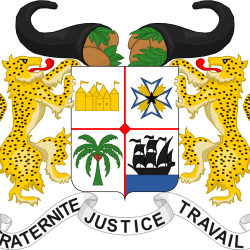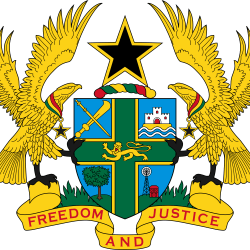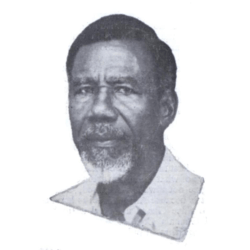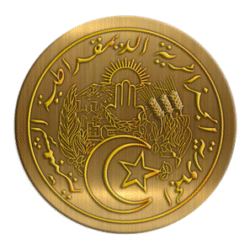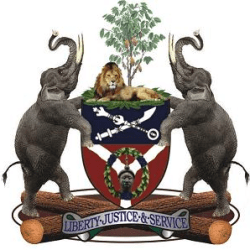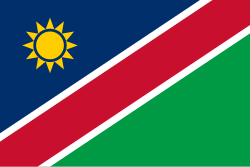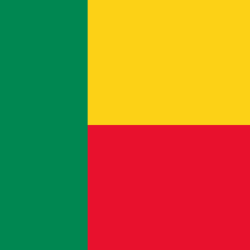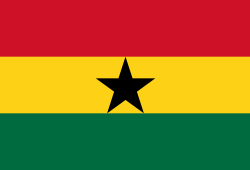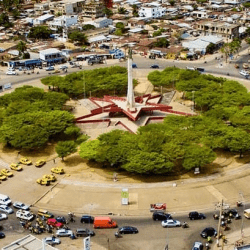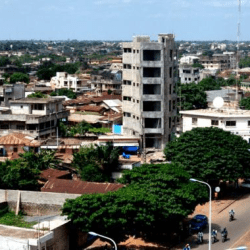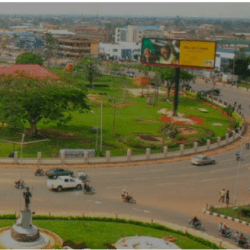The Benin Republic coat of arms is the official emblem of the country. It indicates:
Support
Two spotted golden panthers;
Stamp
Two cornucopias of sand from which corn cobs protrude;
Motto
Fraternity – Justice – Work in sand on a banner.
The coat of arms of Benin Republic was reintroduced in 1990 after being replaced during the period that lasted between 1975-1990.

According to article 1 of the Constitution of the Republic of Benin of 11 December 1990, the arms of Benin are:
- Quartered in the first quarter of a golden Somba castle;
- On the second argent a star of Benin proper, that is to say, a cross with eight points azure chamfered with rays argent and sable in abyss;
- On the third Argent a sinople palm tree charged with a fruit Gules;
- On the fourth Argent a ship Sable sailing on a sea Azure with a lozenge gules on the line of quartering;
More on Benin Republic
The Republic of Benin is a country in West Africa.
Capital: Porto-Novo
Continent: Africa
Currency: West African CFA franc
Official language: French
Population: 13 million (2021) World Bank
Area: 112,620 sq km
Dialing code: +229

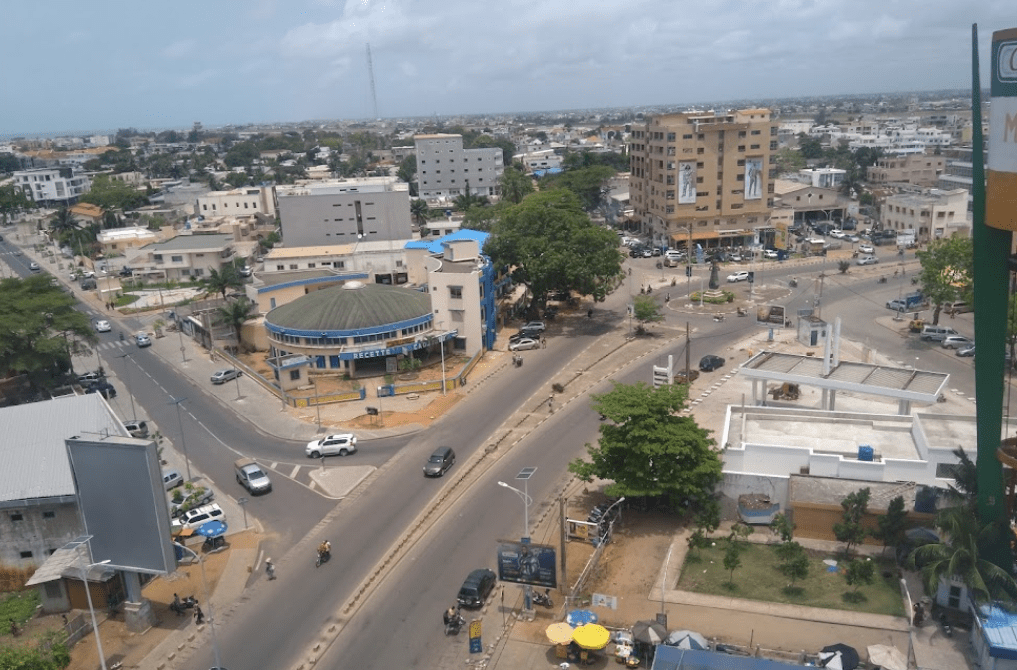



Benin is bordered by Togo to the west, Nigeria to the east, Burkina Faso to the north-west, and Niger to the north-east.



It is home to the former Dahomey Kingdom from circa 1600–1900.
Majority of its population lives on the southern coastline of the Bight of Benin, part of the Gulf of Guinea in the northernmost tropical portion of the Atlantic Ocean.

The capital is Porto-Novo. The seat of government is in Cotonou, the most populous city and economic capital.
Land area
Benin has a land area of 114,763 square kilometres (44,310 sq mi) and its population in 2021 was estimated to be 13 million.
Economy
It is one of the least developed, with an economy significantly dependent on agriculture. It is an exporter of palm oil and cotton.
Tourism
Pendjari National Park offers safaris with elephants, hippos and lions.
Departmets (states)
Benin is divided into twelve states, known as departments (French: départements) which are subdivided into 77 communes. In 1999, the previous six departments were each split into 2 halves, forming the later twelve.
The 12 departments (states) of Benin Republic are:
- Alibori
- Atakora
- Atlantique
- Borgou
- Collines
- Kouffo
- Donga
- Littoral
- Mono
- Ouémé
- Plateau
- Zou


People
The majority of Benin’s 11,485,000 inhabitants live in the south of the country.
About 42 African ethnic groups live in this country, including the Yoruba in the southeast (migrated from Nigeria in the 12th century); the Dendi in the north-central area (who came from Mali in the 16th century); the Bariba and the Fula in the northeast; the Betammaribe and the Somba in the Atakora Mountains; the Fon in the area around Abomey in the South Central and the Mina, Xueda, and Aja (who came from Togo) on the coast.



Migrations have brought other African nationals to Benin that include Nigerians, Togolese, and Malians.
The foreign community includes Lebanese and Indians involved in trade and commerce.
Religion
A year 2020 estimate puts the percentage of Christians population in Benin at 52.2%, Muslim 24.6%, Animist 17.9 and followers of other faiths or those with no religion at 5.3%.

Traditional religions include local animistic religions in the Atakora (Atakora and Donga provinces), and Vodun and Orisha veneration among the Yoruba and Tado peoples in the center and south of the nation.
The town of Ouidah on the central coast is the spiritual center of Beninese Vodun.
Foods
Benin cuisine involves fresh meals served with a variety of key sauces.
In southern Benin cuisine, an ingredient is corn which has been used to prepare dough which has been served with peanut- or tomato-based sauces.
Fish and chicken, beef, goat, and bush rat are consumed.
A staple in northern Benin is yams which has been served with sauces mentioned above.
The population in the northern provinces use beef and pork meat which is fried in palm or peanut oil or cooked in sauces.
Cheese is used in some dishes. Couscous, rice, and beans are eaten, along with fruits such as mangoes, oranges, avocados, bananas, kiwi fruit, and pineapples.
Meals are said to be generally light on meat and generous on vegetable fat.
Frying in palm or peanut oil is a meat preparation, and smoked fish is prepared.
Grinders are used to prepare corn flour, which is made into a dough and served with sauces.
Chicken is roasted over a fire on wooden sticks.
Palm roots are sometimes soaked in a jar with salt water and sliced garlic to tenderize them, then used in dishes.
